The Tackle: Mark Robinson’s likes and dislikes from the 2020 AFL semi-finals
Hawthorn’s ruthless attitude was a trademark of its premiership era, but Richmond is getting bashed for playing on the edge. Get Mark Robinson’s take on the Tigers and all his likes and dislikes of semi-final weekend.
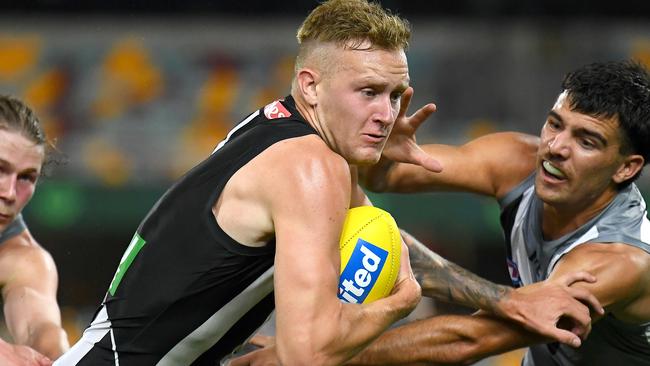
And then there were four.
Before we look ahead to the challenges Port Adelaide has in stopping a rampant Richmond and Brisbane faces in putting a leash on the dominant Patrick Dangerfield and his Geelong cohorts, Mark Robinson looks at the weekend’s semi-final clashes and gives his likes and dislikes.
SCROLL DOWN TO READ WHICH LION LUKE HODGE THINKS COULD DO THE JOB ON DANGER
Watch the 2020 Toyota AFL Finals Series on Kayo with every game before the Grand Final Live & On-Demand. New to Kayo? Get your 14-day free trial & start streaming instantly >
DISLIKES
1. PIE TIME FOR A NEW BEGINNING?
He was the Rising Star winner in 2018 and kicked 38.24 in a year where Collingwood made the Grand Final. His speed and smarts from the goalsquare signalled a potentially strong career as the new hybrid player in a traditional key position. Two years later, Jaidyn Stephenson is a hollow player. The question will be asked by either himself or Collingwood: Does he need a new club? The Pies didn’t give up on him, selecting him for the final against Geelong. It didn’t work — Again. Maybe the glandular fever he contracted after Christmas is the reason, maybe the gambling issue of 2019 and suspension got into his head. Whatever the reason for his alarming form drop, Stephenson has to find his self-confidence over the summer. His career hangs in the balance.
RELATED: ‘OVER-RATED’ DE GOEY NOT WORTH BIG BUCKS
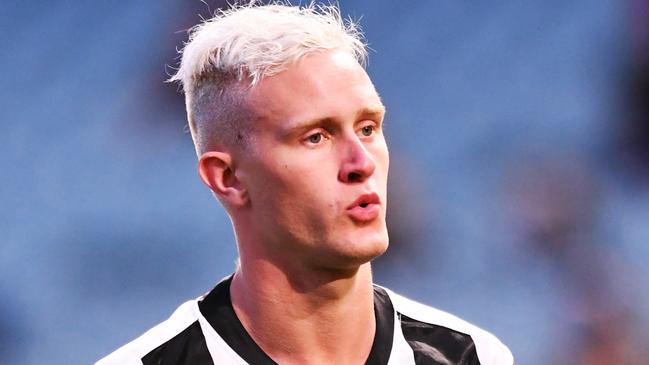
2. COLLINGWOOD’S PRESSURE — OR LACK OF
Magpies president Eddie McGuire painted a kind of gallant-in-defeat reaction after the team’s dismal performance against Geelong: “It wasn’t as if there was a lack of desire, it wasn’t as if there was a lack of endeavour, but they just couldn’t get to the ball”. Yes, the major problem was the Cats controlled the game with possessions and marks from the outset. The other major problem was Collingwood’s lack of desire and endeavour. Expecting a response after coach Nathan Buckley gathered his players at the quarter-time break, down six goals, the Pies instead collapsed. They still couldn’t win the ball and the necessary desire and endeavour was missing. In the first quarter, the Pies pressure factor was a respectable 194. From there, they applied a pressure factor of just 152 against Cats. It was the second-lowest amount of pressure applied by a side across the final three quarters of a match this season. Their desire deserted them.
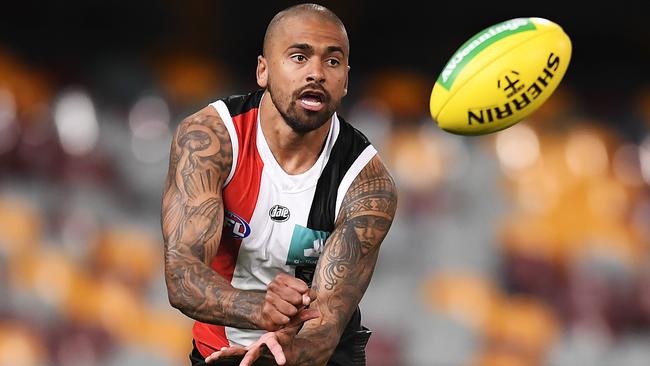
3. DOWNHILL SKIER?
His supporters say give him the ball and let him get to work. His critics say he’s got to find more ball himself. St Kilda’s big-money recruit Brad Hill was only average across the two finals matches. He averaged 66 ranking points, 15.9 disposals, 12.8 uncontested possessions and 304m gained across the home-and-away season. In the finals, those numbers dropped to
36 ranking points, 11.5 disposals, 7.5 uncontested possessions and 238m gained. An early-season headline in the Herald Sun labelled Hill a downhill skier and his finals output hasn’t erased that accusation. He would/should be disappointed with his two finals games for the Saints.
4. WHY THE BASHING OF RICHMOND?
This PC world we live in is invading the football field. It seems the nice people who follow football want Richmond to play nice football. Yes, they play on edge, and Trent Cotchin and Tom Lynch have been the focus since Friday night’s win over St Kilda, but so what? As Matthew Lloyd said on 3AW on Saturday, you’d rather play edgy football than soft football. Richmond was the darling team in 2018, the respected team in 2019, and are probably the most despised team in 2020. Again, so what? The “unsociable’’ Hawks were praised for their ruthless attitude and actions through their glorious three-peat, yet, strangely, the Tigers are being heavily criticised for employing the same hard-nosed attitude.
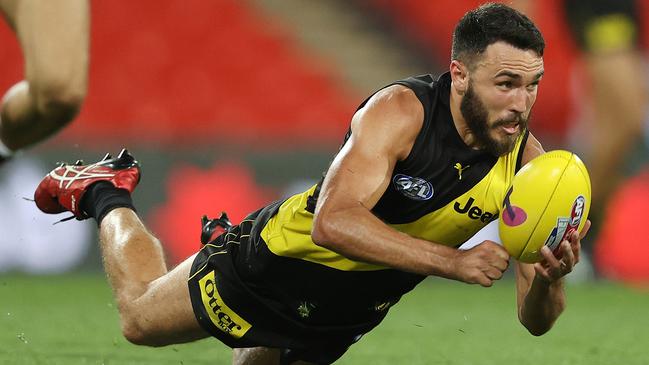
LIKES
1. TIGERS’ FINALS SPECIALIST
Peter Matera at West Coast, Michael Long at Essendon and Shaun Burgoyne at Hawthorn are exalted at their clubs for their finals performances. Add “Titch’’ Edwards to that list of Indigenous players who stand up in finals matches. Since the start of Richmond’s emergence in 2017, Edwards’ points ranking, disposals and score involvements when playing finals increase from the numbers produced in his home-and-away matches. He is a player who lifts his game for the occasion. He was close to best afield on Friday night against St Kilda and seems to be in the best players in most matches he plays. So much so, the next commentator who describes Edwards as an “underrated star’’ should retire their microphone. He could be the best tap, touch and short handball exponent in the game.
2. JACK THE CAT
Jack Henry has had his moments in recent games, either by turning the ball over by foot or taking too long to get rid of the ball, and those mistakes have been costly. On Saturday night, he was a first-option player and, as such, was more assured with the ball. Henry recorded a season-high 103 ranking points against the Pies, which was the second-highest of his career. He also had 12 disposals and kept Will Hoskin-Elliott goalless in their 40-minute match-up. The 22-year-old was part of a Geelong defensive group which denied the Pies for three-quarters. That said, you’d expect the opposition to be much better this weekend.
3. POST-MATCH REVIEWS
St Kilda coach Brett Ratten and Collingwood coach Nathan Buckley were forthright and expansive in their after-match press conferences. Ratten about the need to step up as a team and Buckley, among other issues, about Jordan De Goey’s contract. That’s simply about dollars, Buckley said, and how much De Goey’s camp values De Goey the player. Let’s be frank, he kicked 14 goals in nine games and nine of those goals came in two games. He is not an $800,000 player, despite being a potential matchwinning forward. That requires consistency of performance and De Goey does not supply that.
MORE AFL:
Carlton not interested in Collingwood forward Jordan De Goey
Moneyball: Braydon Preuss wants to be a Giant, Orazio Fantasia to leave Essendon
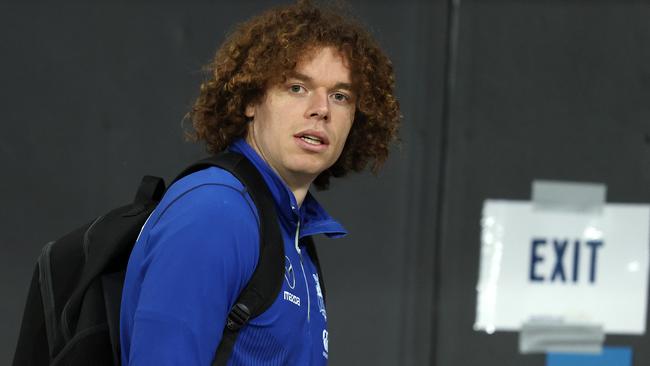
4. BEN BROWN’S HAD PLENTY OF SUITORS
The Herald Sun can reveal several clubs have spoken to Brown’s management about next year, some of them with strong interest and others getting the lay of the land. Melbourne, Collingwood and Essendon are understood to be interested in the leading key forward. The Demons are believed to be open to trading Tom McDonald, although not sure the Kangas are keen on that trade scenario. The Bombers need a key forward to replace Joe Daniher and have had talks with Brown’s manager Adam Ramanauskas. The Magpies are also understood to be contemplating a play for Brown. North’s issue is getting what they want for Brown, which will be difficult to achieve, seeing as they dumped him in the first place.
HOW THE LIONS CAN HANDLE DANGER
Patrick Dangerfield looms large.
When doesn’t he?
If he’s not the best player in the competition, he’s the most destructive because of his reflex, speed, power and brutality in the contest.
Of course, the Lions will have a plan for him on Saturday night, although their forward 50m plan for him is yet to be tested because the Lions have not really experienced Dangerfield forward.
They know his capabilities, they don’t know yet if they can stop them.
In Round 6, he played 92 per cent midfield and only eight per cent forward in what was a 26-disposal, eight-clearances performance.
In the midfield, where Dangerfield will play minutes, he will be held accountable by the likes of Jarryd Lyons, Jarrod Berry and Lachie Neale, but a full-time stopper won’t be expected because the Lions coaching staff, led by Chris Fagan, doesn’t generally use a tagger.
No, the intrigue is who takes Dangerfield near goal.
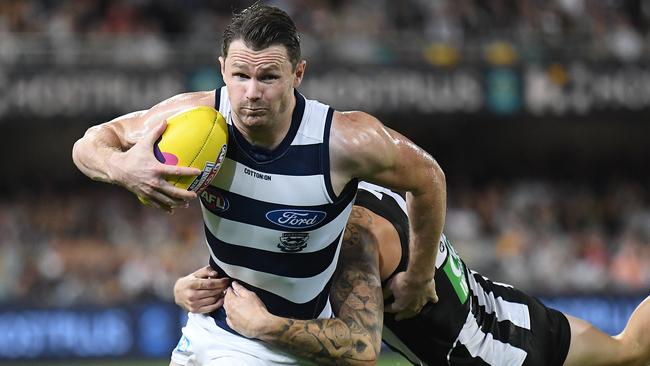
Harris Andrews will stand Tom Hawkins. Ryan Lester played on Jack Riewoldt in the Qualifying Final, but he will likely have Gary Rohan as an opponent. Brandon Starcevich is 21-years-old and only played 22 games, so that’s a no. That leaves Daniel Rich v Gazza, and Grant Birchall, Callum Ah Chee and Starcevich for a mix of Luke Dahlhaus, Gryan Miers, Sam Simpson and maybe Brandon Parfitt when he slides forward.
Enter Darcy Gardiner.
He is 193cm and 92kgs. Dangerfield is 189cm and 92kg.
Luke Hodge doesn’t know the impending match-up, nor will he know because, while he works for the Lions, his role as a TV commentator for Channel 7 are not mutually exclusive.
The former Lion rates Gardiner highly.
He rates Dangerfield in a different sphere again.
He says Gardiner can play all sorts, from Eddie Betts to Lance Franklin, and has work ethic and strong competitiveness.
“He’s physical, quick, almost like (what) a Ben Stratton could do at Hawthorn,’’ Hodge said.
Whoever stands Dangerfield deep forward, he says, will be required to be totally Dangerfield focused.
“I don’t think anyone would like to play on Dangerfield forward,’’ he said.
“Did you see the moment when Dangerfield turned on a dime and (Brayden) Maynard slipped over and Dangerfield went and marked in front of Hawkins and whoever it was?
“He did it so easily. The way he reads the flight of the ball, his speed, his power, he can jump, he can take a mark. There’s why you’d hate to play on him in the forward line.
“No matter where the ball is, he’s a chance to get there first, because he reads it so well.’’
Hodge said Dangerfield disrupts team defence because opponents become Danger-centric.
“The thing he has on his side — and Dusty Martin has it as well — is when you’re playing on him, it’s not like you’re playing on a first, second or third-year player, whereas he’s out of the play and you don’t care and you’ll go mark the ball yourself.
“It’s ‘Where’s Dangerfield, what’s Dangerfield doing’?
“He makes you take your eyes off the ball and it stops your intercept marking, or stops you going to the contest, because you’re more worried about Dangerfield.’’
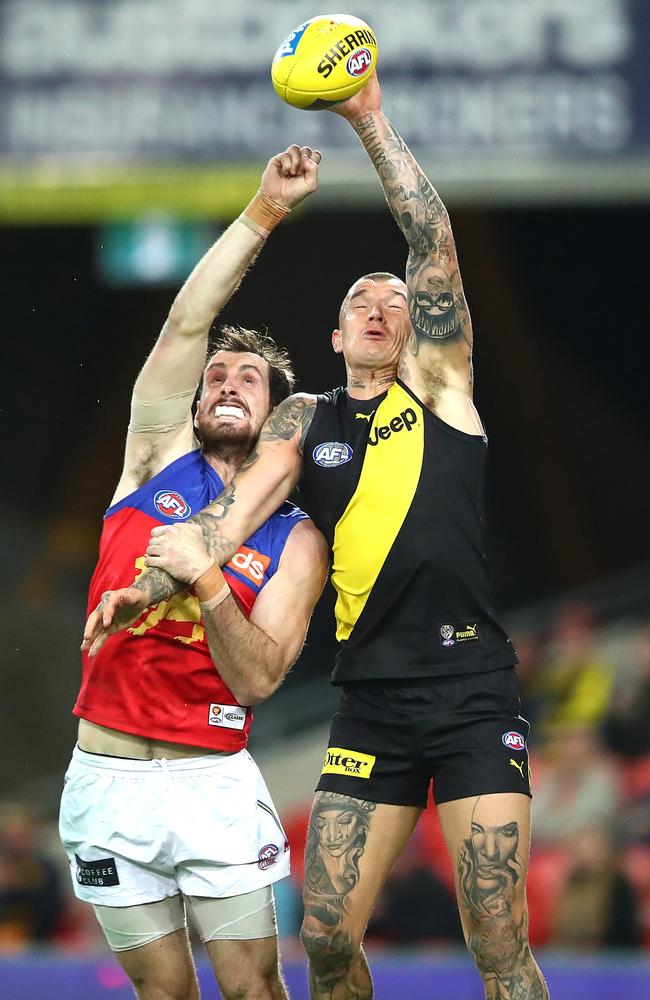
Again, Hodge does not know the match-up, but if it is Gardiner, Hodge almost guarantees a ripper contest.
“Darcy’s a good, loyal, ripping country boy, grew up down near Geelong, played Falcons and is one of these competitive blokes, whether it’s a game of golf, or a game footy, or a game scrabble,” Hodge said.
“As a teammate, the boys love him.
“He’s similar to Stratton. They know what he’s going to produce, they know he’s going to put his body on the line.”
Is he a worrier about the matchwinning capabilities of a Dangerfield, if he as given the task?
“Nuh, he’ll look forward to it,’’ Hodge said.
“He played on Buddy when he was at his peak. He doesn’t back away from a challenge.
“I think everyone would be nervous playing on Dangerfield, but is he going to be worried? No.’’
The growth in depth of Geelong’s midfield has allowed Dangerfield to play more forward in the second half of the season.
When he played predominantly forward against North Melbourne in Round 20, it was said coach Chris Scott was resting his major weapon in preparation for the finals.
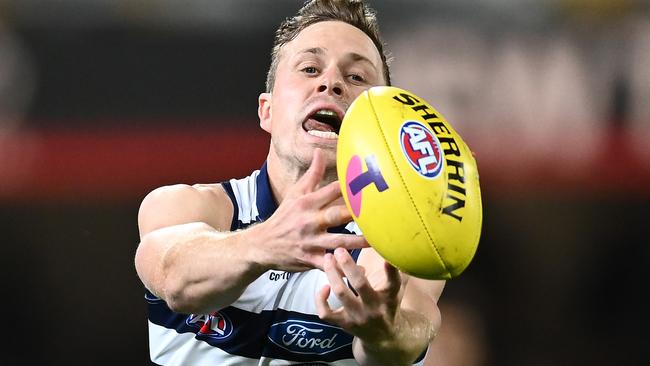
It may have been the case, but there’s also an argument that Scott’s finals plan for Dangerfield was first laid in that game against Kangas. That it was the time to test the rest of the midfield.
“I’ve said all year I reckon Geelong has fallen down in finals because of their reliance on Dangerfield and Selwood and they’ve got to play midfield to dominate,’’ Hodge said.
“Why Geelong has been so good this year is they’ve got a good spread.
“Look at Mitch Duncan on Saturday night, he had 30 touches, Selwood had his hand issue but he was harder than anyone else on Saturday night, then you’ve got Cam Guthrie who goes through, Parfitt, (Mark) Blicavs off a wing … and halfway through the first quarter they threw Dangerfield into the middle.
“There’s that flexibility in the middle and they don’t have to rely on him getting the ball as much.’’
Originally published as The Tackle: Mark Robinson’s likes and dislikes from the 2020 AFL semi-finals
